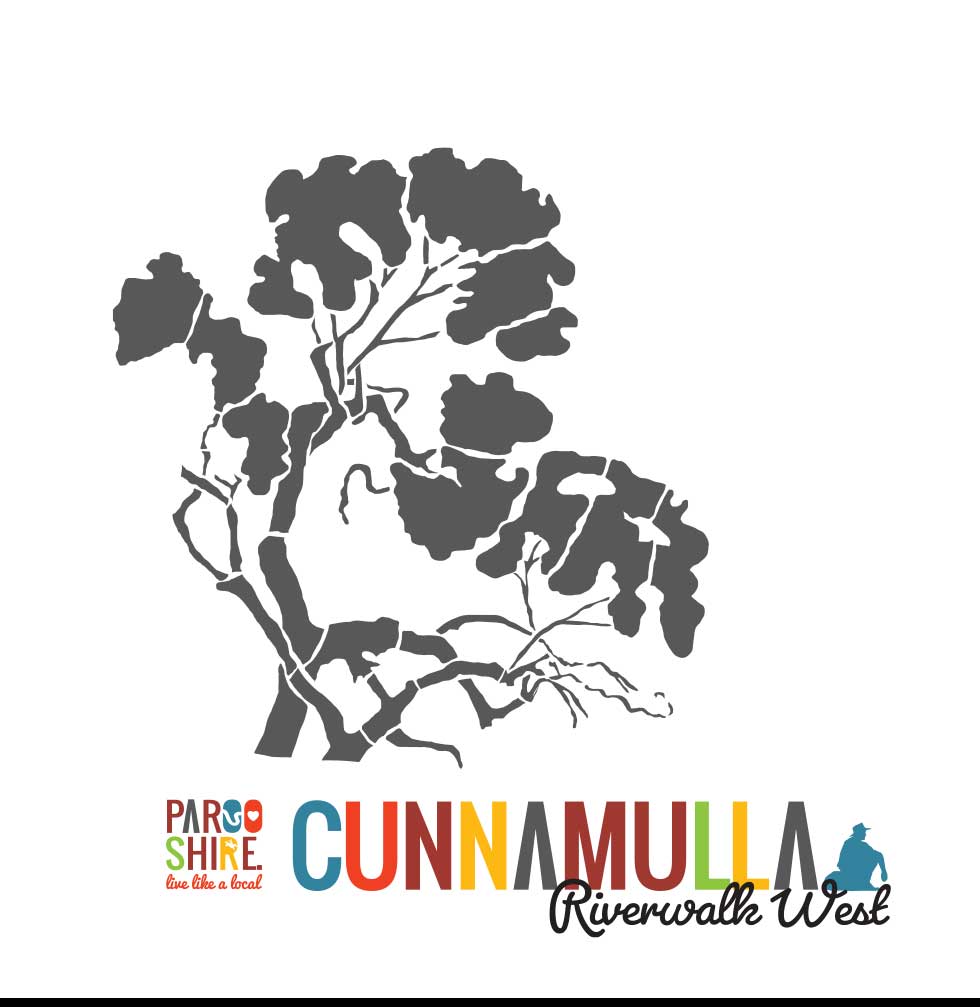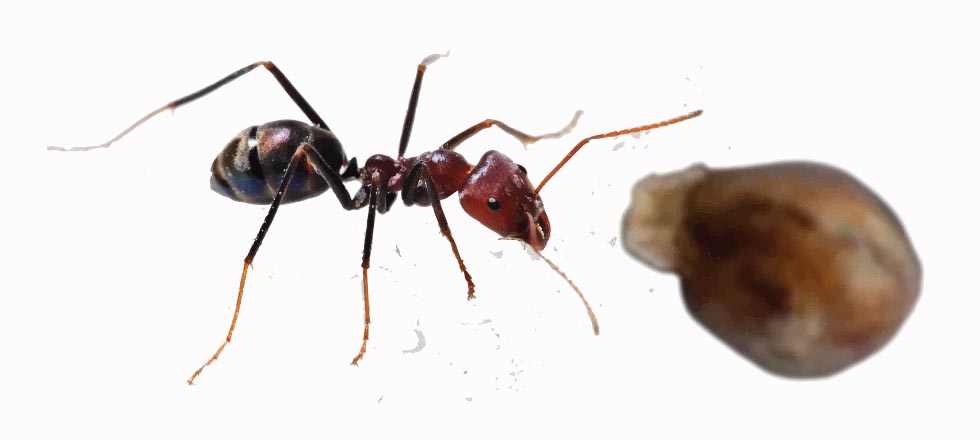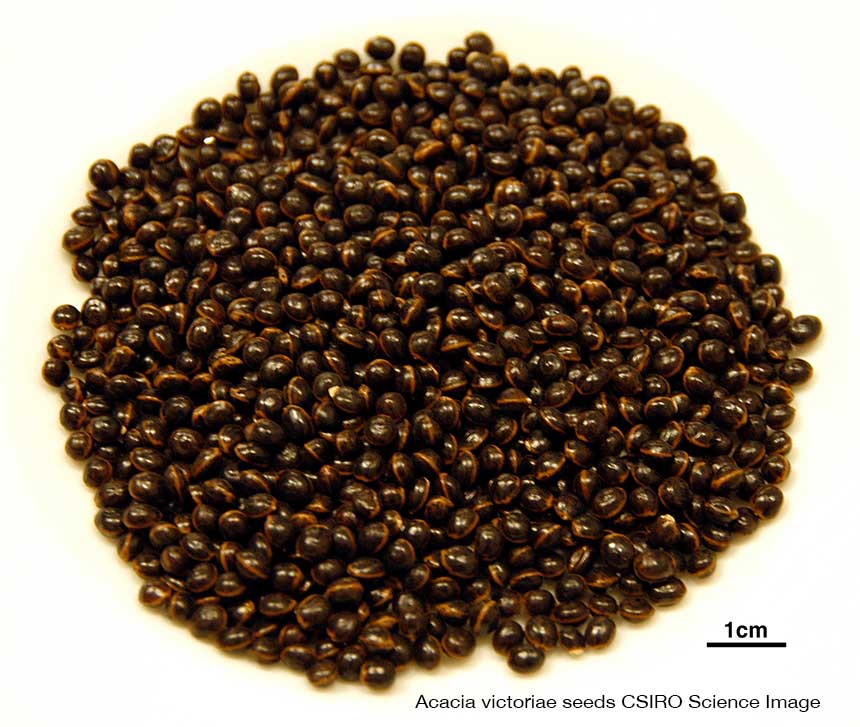

and Gundabluie seeds
A fascinating feature of the meat ant nest we see here along the Riverwalk is the way it sits adjacent to a stand of Gundabluie [Elegant] wattle (Acacia victoriae). It makes one wonder if the stand has not been established here inadvertently by the ants as a result of them harvesting the wattle seed from the surrounding bush and bringing it back here to their nest.
Wattles are amongst an interesting group of plants that specifically encourage the ants to do this by attaching a protein rich ant bait called an elaiosome to their seeds.
The idea here is that by first gathering the seed, the ants disperse it away from the parent plant (which is good!). Then when the ants eat the elaiosome and move the seed into to the underground rubbish heap in their nests, the wattle seed is ideally placed to then germinate and grow up in nutrient rich, loose soil.
The images below from the Australian Virtual Herbarium give you a wonderful botanical view of the distinctive flowers and seeds of Gundabluie wattle.

legendary bush tucker
While the ants are only attracted to the nutrient rich bait on the outside of the seed, Aboriginal people have a far more holistic approach to this valuable source of bush tucker.
The CSIRO is working with Aboriginal communities and Australian industry to help develop the bush foods industry.
It singles out the Elegant [Gundabluie] wattle for special attention noting that while the seeds of many Acacia species are edible, those of Acacia victoriae are regarded by many as the food industry standard.
These seeds could be gathered and traded amongst Aboriginal communities. After roasting the flavour is described as nutty.
Acacia seeds are high in protein and have a low glycaemic index making them of special value for diabetic and other specialty diets.


8. Pelicans
10. Budgerigars
